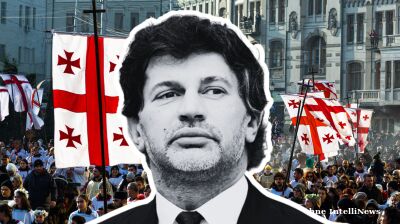A controversy has blown up in Georgia following the discovery of an icon in Tbilisi's prominent Holy Trinity Cathedral featuring Joseph Stalin, the Soviet dictator known for orchestrating the deaths of millions.
The icon was drawn to public attention when a video surfaced on social media showing the icon in Holy Trinity, the largest church in Tbilisi.
Ilia Chigladze, a Georgian priest, expressed his dismay on Facebook, arguing that featuring Stalin in the cathedral propagates harmful falsehoods. He denounced the depiction of Stalin as a faithful Orthodox Christian who heeded the saints, describing him as a bloodthirsty, godless tyrant instead.
The controversial icon first appeared in 2008 in a St. Petersburg church. The Russian Orthodox Church canonised Matrona of Moscow in 1999. The icon showcases various episodes from her life, with Stalin being one of the figures portrayed.
Specifically, the icon illustrates a supposed meeting between Matrona and Stalin before Nazi Germany's invasion of Moscow. According to the story, Matrona prophesied to Stalin that the Russian people would triumph, assuring him of victory and urging him not to abandon Moscow. This meeting's historical accuracy is debated, with many considering it a mere legend fabricated to portray Stalin in a religious light.
Despite Stalin's notorious record of political purges and church destructions, he still enjoys a measure of reverence in Georgia. However, many others view his image as a desecration of the memory of Soviet totalitarianism's victims.
"During Joseph Stalin's regime, hundreds of Georgian clergy, primarily hierarchs of the Georgian Orthodox Church, along with thousands of parishioners, were executed, especially during the anti-Soviet uprising of 1924 and the Stalinist purges of 1937-1938. Across the USSR, approximately 80,000 clergymen and up to a million citizens were executed solely on the basis of their religious beliefs during Stalin's rule, according to the statement," the Soviet Past research laboratory said in a statement.
The Gulag Museum in Russia estimates the number of Stalin's repression victims at around 20 million, highlighting the extent of his tyranny.
Irma Inashvili and Davit Tarkhan-Mouravi, leaders of the Patriots Alliance party, claimed they donated the icon to Holy Trinity Cathedral, interpreting the icon as symbolising Stalin's turn to God in times of crisis. The Patriots Alliance is known for its pro-Russian stance. Recent public opinion polls suggest that their support is currently at a mere 1%.
Following a barrage of criticism on Facebook, activist Nata Peradze defaced the icon with blue paint. Peradze has a history of protesting against Stalin's glorification, evidenced by a video showing her splashing red paint on a Stalin bust in Mukhrani, eastern Georgia.
"My concern is not what happens inside the church, but the resurgence of Stalin's cult is unacceptable. We cannot stand by as this tyrant is glorified,” Peradze told RFE/RL.
The activist's actions led to threats from pro-Russian groups, some of whom gathered near her house, accusing Peradze of "insulting an icon". These groups faced police intervention to prevent them from reaching the activist's home.
The Georgian interior ministry initiated an investigation into the icon's defacement under the petty hooliganism clause of the Administrative Code.
Following the protests, the Patriarchate restricted media access to Holy Trinity Cathedral for two days. The icon has now been cleaned.
In its initial reaction, the Patriarchate's Press Secretary, Andria Jagmadze, told Tabula news agency that the portrayal of Stalin does not imply the icon is dedicated to him, drawing a parallel to depictions of historical figures like Diocletian in religious art.
Features

Jimmy Lai becomes a symbol of hope and despair in fallen Hong Kong
Hong Kong is gone. Taiwan and the South China Sea must not, at any cost, follow suit.

Indian used car market in the fast lane
India’s used-car market is expected to see sales volumes surpass 6mn units in the current fiscal year, according to a recent CRISIL Ratings report.

PANNIER: Testing time for exiled Tajik opposition as "reformers" announce breakaway party
Reformers Movement to take on Islamic Renaissance Party in battle to win right to lead fight against strongman Rahmon.

Iranian official's visit to Beirut highlights tensions over Hezbollah
Ali Larijani, Secretary of Iran’s Supreme National Security Council, arrived in Beirut on August 13 for the second leg of his regional tour, aimed at engaging with Lebanese political leaders.




